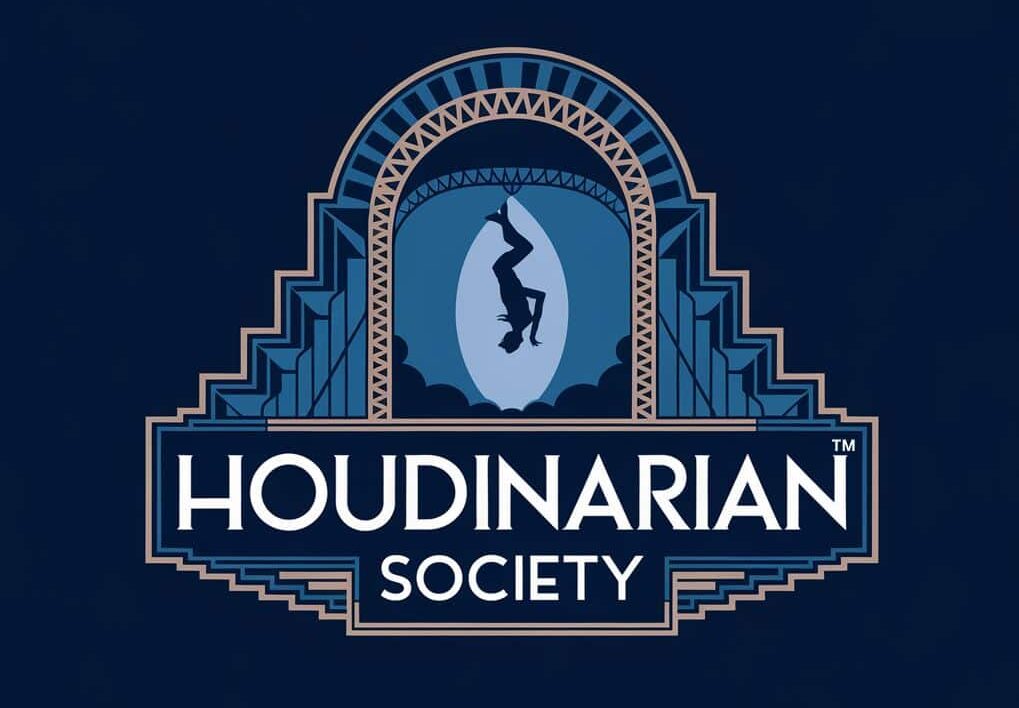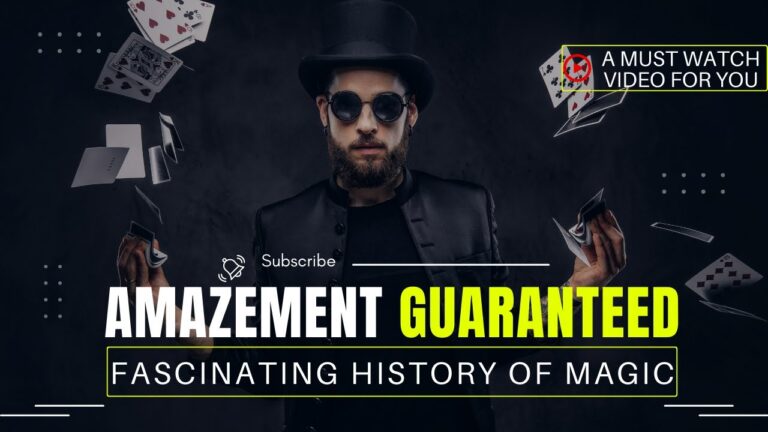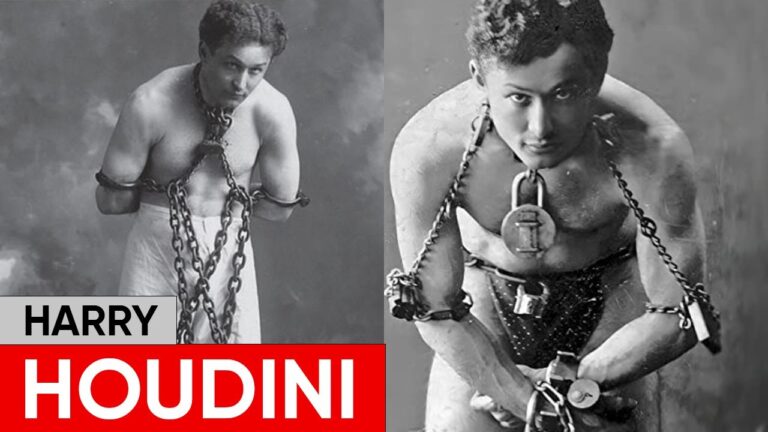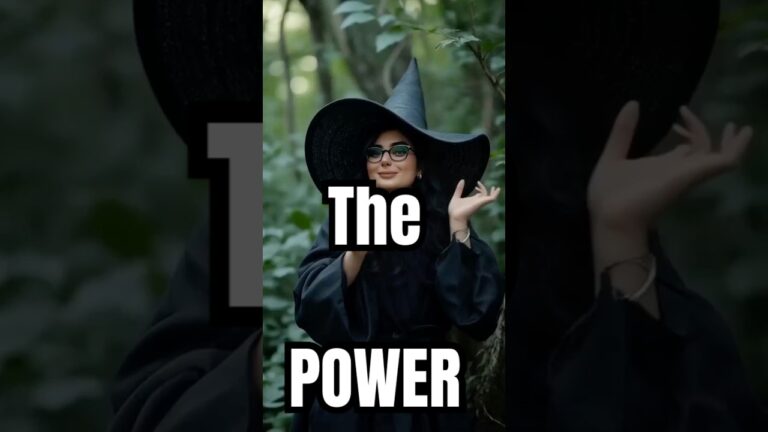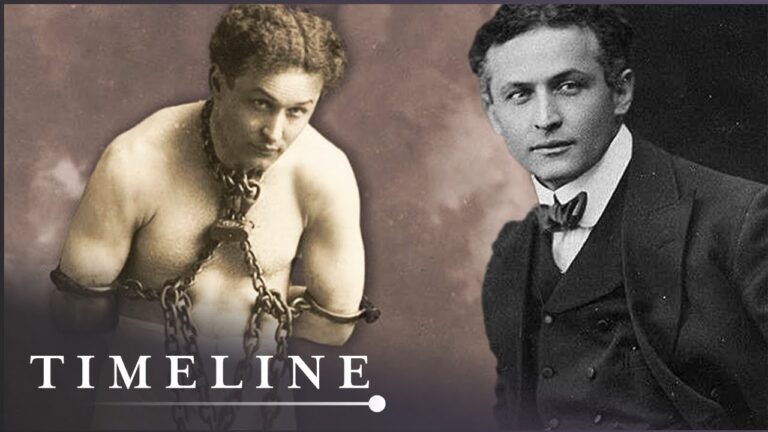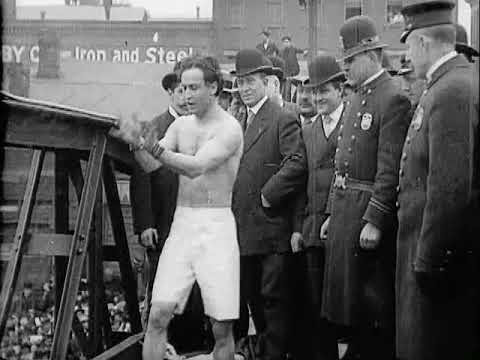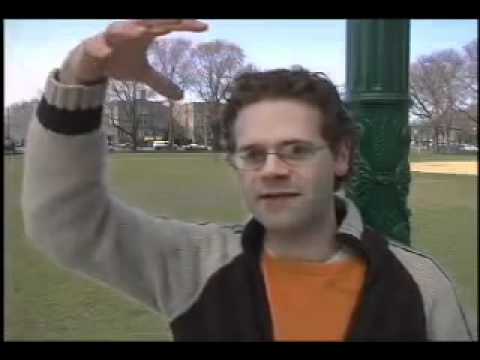Exploring the Golden Age of Magic: Houdini and His Contemporaries
The late 19th and early 20th centuries marked an extraordinary time in the history of stage performance. During this period, the Golden Age of Magic transformed entertainment, bringing mystery and wonder to audiences worldwide through grand theaters and vaudeville stages.
You might be surprised to learn that modern magic owes much of its foundation to Jean Eugène Robert-Houdin, the father of conjuring, who set the stage for the legendary Harry Houdini and his contemporaries. The era saw magic evolve from simple parlor tricks to elaborate spectacles that pushed the boundaries of what seemed possible.
Houdini’s innovative techniques and showmanship created a blueprint that still influences magicians today. His death-defying escapes and grand illusions captured the public’s imagination during a time of rapid social and technological change, forever changing how you experience magic performances.
The Rise of Stage Magic: 1890-1920

The theatrical magic scene transformed dramatically between 1890 and 1920. Magic moved from simple street performances to elaborate stage productions that captured the public’s imagination. Theater magic reached its peak during this era, featuring sophisticated props, intricate illusions, and masterful showmanship.
Historical Context of the Era
The late Victorian period brought unprecedented technological advances and a growing middle class hungry for entertainment. You would have seen magic shows becoming more sophisticated, incorporating new technological accomplishments like electric lighting and mechanical devices.
Magic performances reflected the era’s fascination with science and mystery. Steel rings, bird cages, and specialized cabinets became standard tools of the trade.
Social clubs dedicated to magic flourished in major cities, creating networks of performers and enthusiasts.
The Transition from Street Performances to Theaters
Jean Eugène Robert-Houdin pioneered the shift from street magic to elegant theater shows. His influence changed how magicians presented themselves, trading traditional robes for formal evening wear.
Theater venues allowed for more complex illusions. The famous Pepper’s Ghost illusion became possible only in controlled theater environments.
Performers developed acts specifically for theater spaces, using curtains, trapdoors, and lighting to enhance their illusions.
The Cultural Impact of Stage Magic
Harry Houdini’s spectacular escapes revolutionized magical entertainment, adding danger and drama to traditional performances.
Stage magic influenced early cinema, with many magicians becoming pioneering filmmakers.
Popular tricks like sawing a person in half emerged during this period, creating lasting impressions on audiences worldwide.
The era established magic as a respected art form, elevating performers to celebrity status in society.
Harry Houdini: The Escape Artist Extraordinaire

Harry Houdini transformed the art of magic through his death-defying escapes and masterful showmanship. His innovative methods and relentless pursuit of the impossible set new standards for performers worldwide.
Early Life and Career Beginnings
Born as Ehrich Weisz in Budapest, Hungary in 1874, young Houdini moved to America with his family as a child. His fascination with magic began early, leading him to change his name to Harry Houdini in 1894.
As a teenager, he performed at dime museums and sideshows with his brother “Dash.” These humble beginnings taught him valuable lessons about audience engagement and showmanship.
You can trace his first major break to when he met his wife Bess, who became his stage assistant. Together, they toured vaudeville circuits performing a act called “Metamorphosis.”
Signature Illusions and Acts
His most famous escapes included breaking free from:
- Handcuffs and prison cells
- Water-filled milk cans
- The Chinese Water Torture Cell
- Straitjackets while suspended upside down
The Mirror Handcuff Challenge of 1904 marked a pivotal moment in his career. London’s Daily Mirror newspaper had the cuffs specially made, and Houdini escaped after 70 minutes of intense struggle.
His underwater escapes drew massive crowds. The sealed milk can escape became one of his most dramatic acts, with audiences holding their breath as he emerged from the water-filled container.
Contributions to the Craft and Legacy
Houdini revolutionized magic marketing by creating public challenges. He invited police departments worldwide to try restraining him, turning mundane handcuff escapes into newsworthy events.
His dedication to exposing fraudulent mediums protected countless people from deception. This work showed his commitment to truth in performance arts.
You can still see his influence in modern magic through:
- Innovation: His creative approach to publicity stunts
- Technique: His methods for escape artistry
- Showmanship: His ability to create suspense and drama
His name became synonymous with the impossible, inspiring generations of magicians to push boundaries and challenge limits.
Howard Thurston: The Master Illusionist

Howard Thurston dominated American stage magic from 1908 to 1936 with spectacular illusions and showmanship that set new standards for theatrical magic performances. His innovative marketing methods and massive touring shows reached millions of spectators.
Early Career and Rise to Fame
As a youth, Thurston left home to join the circus, where he first encountered magic performers. After witnessing Alexander Herrmann’s show, he dedicated himself to mastering magic.
His early years focused on card manipulation, which he perfected through relentless practice. Between 1904 and 1907, you would have found Thurston touring internationally with his evolving act.
The defining moment came when he succeeded Harry Kellar as America’s premier magician. Thurston purchased Kellar’s entire show and expanded it dramatically.
Signature Illusions and Performances
His signature illusion “The Rising Card” amazed audiences as selected cards mysteriously floated from the deck. Thurston’s version remained unmatched for decades.
The famous “Levitation of Princess Karnac” featured his assistant floating high above the stage, passing through hoops to prove no wires were used.
His massive touring show required eight train cars to transport. Each performance featured 40 tons of equipment and dozens of assistants.
Innovations in Magic and Marketing
Thurston revolutionized magic marketing by using bright, colorful posters and extensive newspaper advertising. His bold “Do the Spirits Come Back?” campaigns drew huge crowds.
He pioneered the use of electric lighting effects in magic shows, creating mysterious glows and shadows that enhanced his illusions.
His business approach transformed magic from small vaudeville acts into major theatrical productions. You can trace many modern magic show elements back to his innovations.
He invested heavily in new illusion technology, often spending thousands to perfect a single effect. This commitment to innovation kept his show fresh for nearly three decades.
Harry Kellar: The Dean of American Magicians
Harry Kellar dominated American stage magic from the late 1800s through the early 1900s. As the first great native-born American magician, he earned his title as the “Dean of American Magicians” through spectacular illusions and masterful showmanship.
Career Highlights and Major Performances
Born Heinrich Keller in 1849, he changed his name to Harry Kellar early in his career. His path to fame began as an apprentice under Robert Heller and Isaiah Hughes.
By the 1880s, Kellar’s show became the largest and most elaborate touring illusion production in North America. He performed extensively across five continents.
His performances combined classical magic with cutting-edge technology of the era. You would find his shows filled with levitations, mind-reading demonstrations, and spirit manifestations.
Signature Illusions and Stagecraft
Kellar’s most famous illusion was “The Levitation of Princess Karnac,” where his assistant appeared to float in mid-air. This effect mystified audiences worldwide.
His “Blue Room” routine featured objects moving seemingly on their own, while his “Self-Decapitation” act left spectators gasping in disbelief.
You could always spot Kellar’s attention to detail in his staging. He used elaborate Oriental-style decorations and precise lighting to create an atmosphere of mystery.
Influence on Future Magicians
Young Harry Houdini looked up to Kellar as a professional father figure. Their relationship helped shape Houdini’s approach to magic and showmanship.
When Kellar retired in 1908, he named Howard Thurston as his successor. Even in retirement, he continued supporting magic, coming out of retirement in 1917 to participate in benefit shows.
His methods of misdirection and presentation became standard practices in stage magic. Modern magicians still study his techniques and theatrical innovations.
Charles Carter: Carter the Great
Charles Carter ranks among magic’s most spectacular performers, dazzling audiences worldwide with elaborate illusions and masterful showmanship during the early 1900s. His massive touring productions and innovative marketing techniques helped shape modern stage magic.
Journey to Stardom
Charles Joseph Carter began his magical career at just ten years old, performing as “Master Charles Carter the Original Boy Magician” in Baltimore venues. His natural talent and dedication to the craft quickly became apparent.
As a young performer, you would have seen Carter refining his skills across American theaters. His ambition drove him to create ever-larger shows.
His touring equipment grew to an impressive 31 tons, so massive that it prevented him from boarding the RMS Titanic. This enormous production traveled the globe, bringing magic to international audiences.
Signature Acts and Illusions
Carter’s performances featured stunning spectacles that left audiences breathless. He specialized in grand illusions that combined theatrical elements with magical expertise.
His shows incorporated exotic themes and dramatic presentations. You might have witnessed him making live elephants disappear or sawing people in half with remarkable flair.
Born in New Castle, Pennsylvania, Carter developed unique presentations that set him apart from other magicians of his era. His marketing materials often featured striking posters with bold claims and mysterious imagery.
Contributions to the Evolution of Stage Magic
Carter revolutionized magical marketing through his innovative advertising campaigns. His dramatic posters and promotional materials set new standards for theatrical promotion.
He pioneered international touring with full-scale illusion shows. Your modern magic shows owe much to Carter’s groundbreaking approach to theatrical presentation.
His influence spread throughout the San Francisco bay area and beyond, inspiring future generations of magicians. Carter’s commitment to spectacle and showmanship helped establish magic as a legitimate theatrical art form.
His legacy lives on through the many innovations he brought to stage magic and theatrical promotion. Your understanding of modern magic shows reflects Carter’s lasting impact on the art form.
Competition and Collaboration Among Magicians
The magical arts during the Golden Age thrived on a delicate balance of fierce competition and shared innovation. Top performers pushed each other to greater heights while working together behind the scenes to advance their craft.
Rivalries and Publicity Stunts
Harry Houdini aggressively collected information about other magicians’ tricks and methods. He did this to learn from magicians like Harry Kellar and Howard Thurston. This competitive spirit drove him to create ever more spectacular performances.
Magic acts often staged public challenges against one another. You might see advertisements where performers claimed they could duplicate or surpass a rival’s signature illusion.
These rivalries sparked newspaper coverage and drew massive crowds. When one magician unveiled a new illusion, others rushed to create their own versions with unique twists.
Behind the competitive facade, many magicians formed secret alliances. They exchanged ideas in private clubs and workshops, building on each other’s discoveries.
The “Golden Age” of magic flourished through this hidden cooperation. Magic societies became crucial meeting points where performers could share techniques safely.
Professional magicians often bought and sold illusions to each other. This practice helped spread innovation while maintaining the mystery for audiences.
Impact on Audience Engagement and Entertainment
Modern street magicians like David Blaine drew inspiration from this era’s blend of competition and collaboration. Their intimate performance style creates direct audience connections.
The push for innovation led to more interactive shows. You can see this influence today when magicians invite audience members on stage.
The combination of rivalry and teamwork created a golden period of invention. Magic evolved from simple tricks to complex theatrical productions that still amaze audiences.
Marketing and Promotion Techniques
The magicians of the Golden Age used groundbreaking marketing tactics that transformed entertainment promotion forever. Their innovative methods created massive public interest and helped establish magic as a respected art form.
Revolutionary Advertising Strategies
Harry Houdini’s marketing strategies centered on three key elements: creative promotion, thorough planning, and delivering quality performances. He would often stage public challenges and escapes to generate buzz.
You can see his genius in the way he turned every performance into a media event. He’d issue dares to local police departments to try imprisoning him, creating instant publicity.
His most effective strategy was making each show feel like a once-in-a-lifetime spectacle. As a master self-marketer, he knew how to build anticipation through carefully timed press releases and public demonstrations.
Use of Posters, Flyers, and Media
Vibrant, eye-catching posters became a trademark of magic advertising. The images often showed dramatic scenes with bold colors and striking typography.
Magicians distributed thousands of handbills before shows. These featured testimonials, press quotes, and promises of never-before-seen illusions.
Local newspapers played a crucial role. You’d find detailed accounts of upcoming performances, interviews, and challenge acceptances splashed across front pages.
Building Personal Brands and Public Personas
Houdini crafted his public image as the “Handcuff King” and “Master Mystifier.” Each title reinforced his reputation for impossible escapes.
Magicians developed unique stage names and costumes to stand out. Your success depended on having a memorable character that audiences could instantly recognize.
They maintained their personas offstage too. Every public appearance, from shopping trips to restaurant visits, became an opportunity to strengthen their brand identity.
Careful attention to detail in their appearance, speech, and mannerisms helped create an air of mystery that extended beyond the stage.
The Evolution of Magic as Prestigious Theater Attractions
Magic transformed from street entertainment into sophisticated theatrical productions during the late 19th century. Top magicians performed in elegant venues and created shows that combined artistic elements with cutting-edge illusions.
Transition to High-Class Venues
The Golden Age of Magic brought spectacular stage shows to prestigious theaters. You would find magicians performing at venues like London’s Egyptian Hall and Paris’s Theatre Robert-Houdin, where wealthy patrons paid premium prices for seats.
Jean Eugène Robert-Houdin revolutionized magic performances by wearing formal evening attire instead of traditional mystical robes. This simple change helped establish magic as sophisticated entertainment.
Magicians added elaborate sets, orchestral music, and theatrical lighting to their shows. These production values elevated magic beyond simple tricks into full theatrical experiences.
Influence on Modern Magic Shows
Harry Houdini and Howard Thurston set new standards for theatrical magic. Their grand illusions required intricate staging and precise timing.
Modern magicians still draw inspiration from these theatrical traditions. You can see their influence in the elaborate productions of performers like David Copperfield and Penn & Teller.
Stage magic evolved to incorporate storytelling elements. Each trick became part of a larger narrative, keeping audiences engaged throughout the performance.
Lasting Impact on Performing Arts
The theatrical techniques developed during magic’s golden age influenced other forms of live entertainment. You can spot these innovations in modern Broadway productions and concert performances.
Close-up magic and street performances have gained popularity recently, but theater magic maintains its prestigious position. Major venues still feature magic shows that combine classical elements with new technology.
Magic shows helped establish standard practices for theatrical special effects. Many of the staging methods created for illusions became common in other performing arts.
Contents
- 1 The Rise of Stage Magic: 1890-1920
- 2 Harry Houdini: The Escape Artist Extraordinaire
- 3 Howard Thurston: The Master Illusionist
- 4 Harry Kellar: The Dean of American Magicians
- 5 Charles Carter: Carter the Great
- 6 Competition and Collaboration Among Magicians
- 7 Marketing and Promotion Techniques
- 8 The Evolution of Magic as Prestigious Theater Attractions
